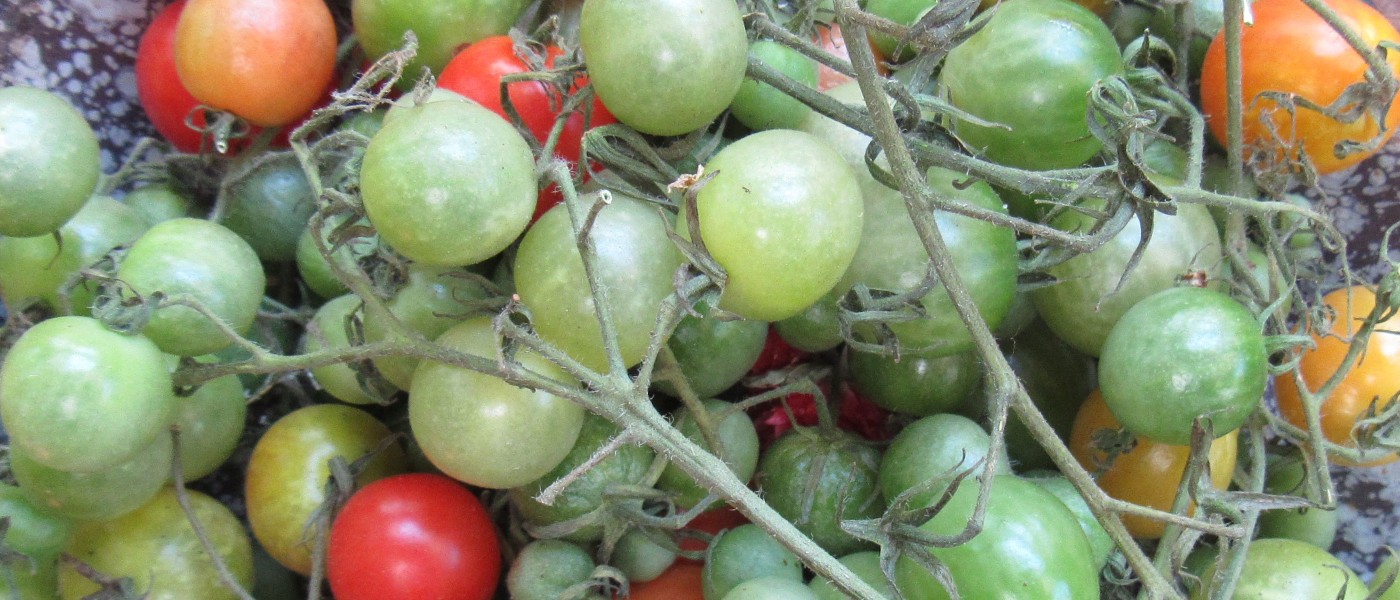The Buzz Behind Your Summer Tomatoes
Growing up, I would always look forward to biting into the first ripe tomatoes from our backyard garden. Their sweet and tangy flavor makes them a key ingredient in classic dishes around the world, like pico de gallo, tomato egg drop soup, and my personal favorite, Caprese salad.
But their culinary heft isn’t the only fascinating thing about tomatoes. Behind those red and yellow globes glistening tantalizingly at the farmers’ market is a special behavior known as sonication, or “buzz pollination.”
Buzzing can serve many purposes for bees, whether as a defensive strategy or as a method of communication. But some bees also buzz to collect pollen, an ancient interspecies give-and-take that evolved over tens of millions of years.
In a typical pollination scenario, a pollinator (like a bee, beetle, butterfly, or hummingbird) lands on a flower to drink nectar or gather pollen, getting dusted with pollen in the process. When the pollinator moves on to another flower, it accidentally leaves behind some pollen, fertilizing that next plant. Once a flower is fertilized, it produces a fruit filled with seeds that can create a new plant, and the cycle repeats.
While the process is similar for tomato plants, there are some differences. Tomatoes are self-pollinated, for one, which means that only one plant is needed for fertilization. And, like other flowering plants that are buzz-pollinated, a tomato flower’s pollen isn’t readily available—it needs to be vigorously shaken out of its stamen, either by wind or, preferably, by certain species of bees.

To learn more, I reached out to Dr. Mario Vallejo-Marı́n, an evolutionary biologist in the department of ecology and genetics at Uppsala University, Sweden. His lab researches plant diversity and evolution, with a particular focus on the ecology and evolution of buzz pollination.
During buzz pollination, Vallejo-Marı́n explains, typically, “the bee grasps the flower, and then curls its body around the anthers, or the organs that carry the pollen. And then it starts shaking very strongly, using the same muscles that power flight.” This massive effort triggers the pollen to be released through pores in the anther wall.
While we perceive these vibrations as sound, he continued, it’s the shaking, not the sound, that makes the pollen come out.
Research from Vallejo-Marı́n and his colleagues on bumble bees suggests that while some aspects of this shaking behavior are innate, some are actually learned, and honed, over time. “We have seen that the bee does change the way it manipulates the flower, and the type of vibrations it uses, as it gains experience.”
So why have some plants evolved to be pollinated in this way? One explanation, says Vallejo-Marı́n, is that it’s the result of a long-running tug-of-war between the interests of the plant and the interests of the bee.
“For a bee, the more pollen they can get out on a single visit, the better, because they use the pollen to feed their larvae,” he says. But for plants, losing a ton of pollen in one go isn’t always ideal—fertilization may not happen with every pollinator visit, and pollen takes significant energy to produce. So these stubborn anthers may have given certain plants a competitive advantage, allowing them to limit the amount of pollen that a single bee can remove at one time.
Though research into buzz pollination is still in its early days, we know it’s a crucial process for many plants and bees. About half of all bee species can buzz pollinate, according to Vallejo-Marı́n, including bumble bees (Bombus spp.) and carpenter bees (Xylocopa spp.); a common agricultural pollinator, the European honey bee (Apis mellifera), cannot. Meanwhile, around 20,000 species of flowering plants—including both wild plants and crops like tomatoes, eggplants, and blueberries—are buzz-pollinated.
Amid serious threats to wildlife and ecosystems around the world, it’s never been more important to protect the plant and insect diversity that maintains these ancient interactions and allows life to flourish. Next time you enjoy your favorite tomato dish, consider the hardworking bees that made it possible.


